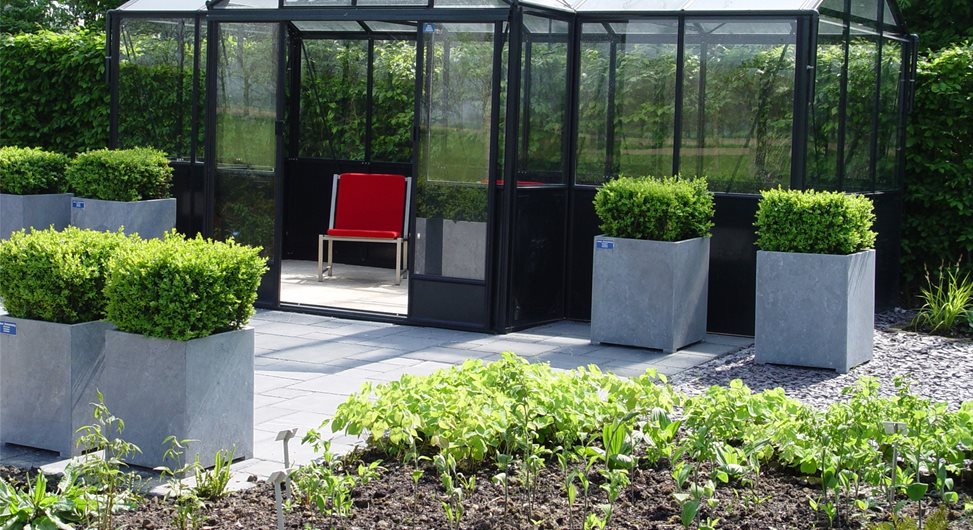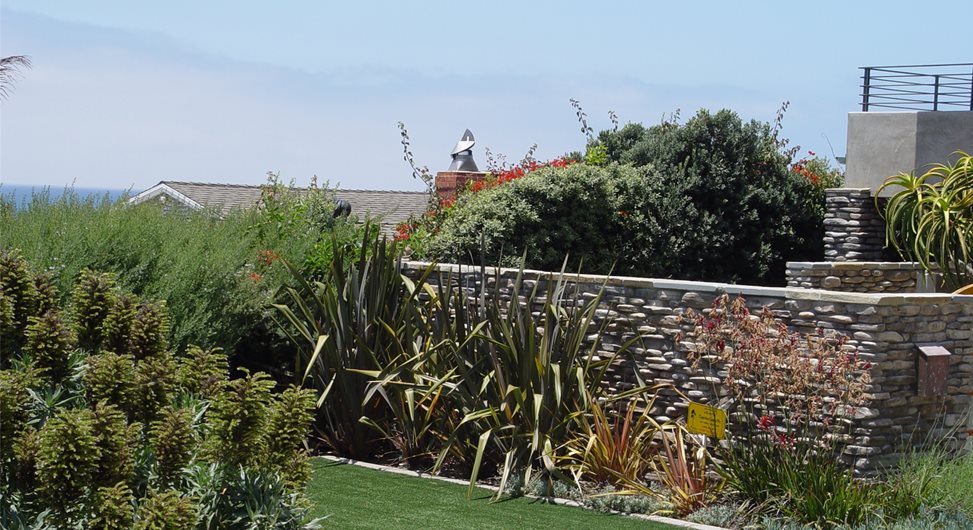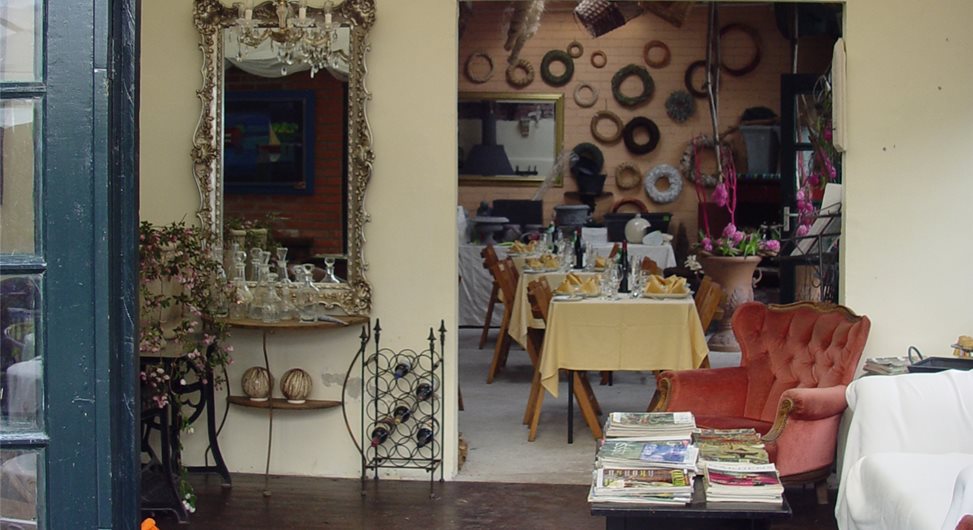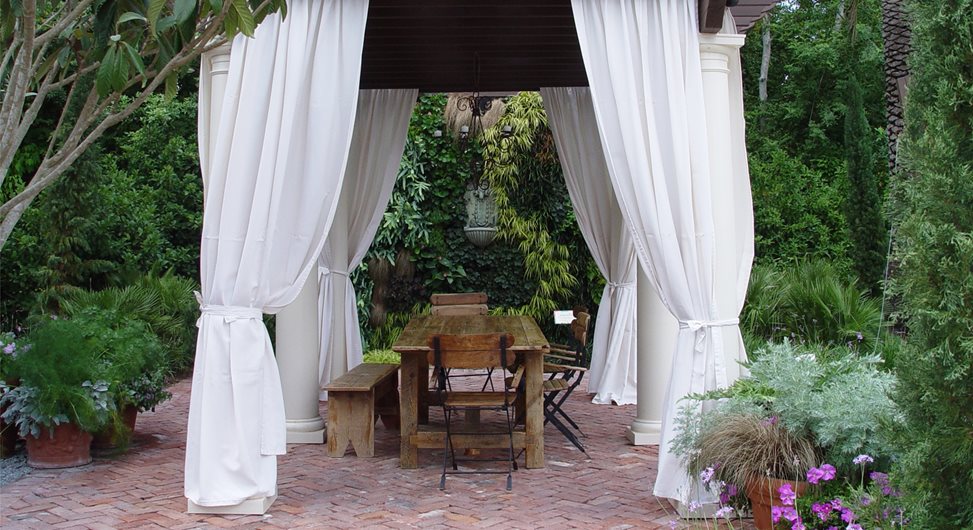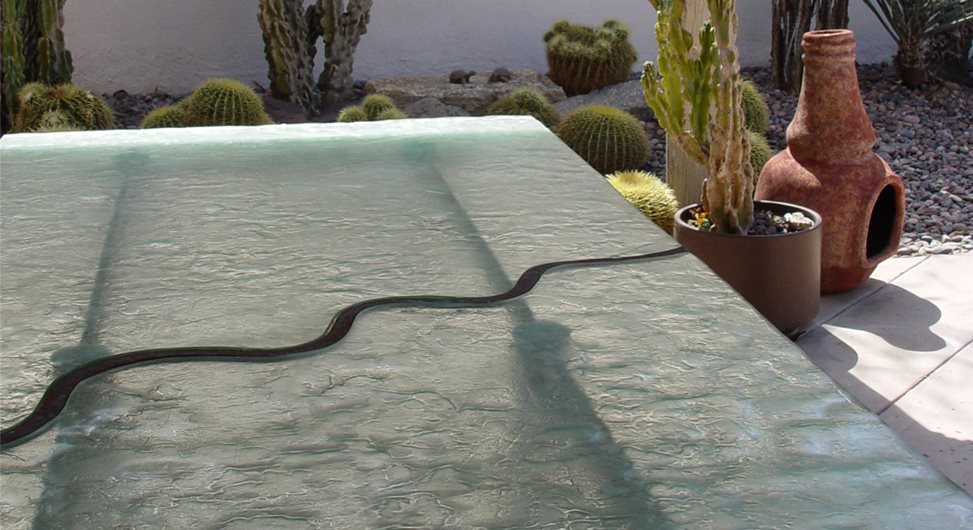Outdoor Office Necessities
7 essential elements for designing a backyard workspaceThe electronic office has changed where and how we work. The ability to escape an institutional setting and work closer to nature makes the home office far more pleasant. Whether the work is paperless or nearly so, an outdoor working environment will require certain features to make it both comfortable and functional.
In rainy Britain where homes are small and cramped, the outdoor "cube" was invented. This is a small prefabricated structure set within a landscape or garden. These feature large glass panels that allow workers to feel they are outdoors while keeping electronics free of the effects of moisture and weather. Here in the States weather allows true outdoor living spaces to be created where the worker can enjoy natural light, views, wildlife and a sense of space while conducting business as usual.
Design of an al fresco office space is best integrated into a site wide design plan. This allows the greatest flexibility rather than trying to retrofit an existing space. The following are the necessary elements that define a space for work that is well thought out and provides an ideal environment for as many seasons as possible.
1. Orientation
Indoor conditions are relatively static all day long, but outside the sun changes position minute to minute. Therefore the goal outdoors is to find a location for the office space that lacks intense solar exposure. The problem of excessive light not only causes over-heating, it also creates problems with computer monitor visibility. Direct UV exposure is not healthy for the longevity of electronic devices either. The north side of a home is the most evenly shaded and therefore ideal. Shade trees can also mimic this same effect, allowing more variation in locale. In general, anywhere that there is little need to mitigate excessive solar exposure will be ideal.
2. Overheads
As an outdoor space, the office is vulnerable to rain and weather if not adequately protected. Therefore a solid roof is advised. This keeps the work space as dry as possible whether in use or not. Natural light can be highly desirable in the work space. Skylights built into a weatherproof roof are a good way to achieve this, and they may be fitted with shades. These are advised in regions of excessively high temperatures, where spaces overheat during midday.
Overheads provide opportunities for lighting and fans. The lighting requirement may be very important for an artist who works at a drawing table all day. A person working on a computer may not require so much ambient light. Either way, the fixture options are far greater under a solid roof. A ceiling fan is just as important because heat collects in these spaces without air movement to drive it out. A variable speed fan provides welcome air movement directly over the work space on warm and humid days.
3. Side Light
In the early morning and late afternoon sunlight originates low in the eastern or western horizon. This may cause direct exposure. Throughout the day glare and reflection from automobiles, swimming pools and buildings can be highly distracting, not to mention problems with monitor visibility. To keep working conditions ideal, you'll need to equip the outdoor office with shades to control side light and glare.
Simple bamboo roll up shades should have very narrow gaps between slats. These can be altered during the day for the best temporary control of side light. The down side to hanging shades is that even a soft breeze can make them sway or bang around. A more costly but effective solution is outdoor power operated screen shades designed to cover large view windows from direct afternoon sun. These are perfect for the outdoor office because they can be operated by remote control to block nearly all the light. Because the side edges are mounted on vertical tracks, they remain fixed and will not cause problems with wind.
4. Breeze Deflector
Even the slightest breeze can cause distracting flutter or send papers flying, which is why working in an ordinary patio can be challenging. For homes where the prevailing winds are predictable, design a barrier to block or deflect air movement. Clear plexiglass panels are the best choice for protecting work spaces without feeling boxed in or sacrificing views of the garden.
5. Insect Screen
Flying insects we tolerate outdoors may not be a problem until you try to work with them. Insects are also detrimental to electronic devices. The problem varies by region but there's no question that an old fashioned screen porch is a necessity in Florida and other "buggy" regions. For a space with a solid roof, curtains made out of insect screen can be opened and closed as needed.
6. Flawless Floor
Outdoors, smooth floors are avoided in outdoor living spaces because they become slippery when wet. Try to roll an office chair over a brick patio and you'll see why ordinary outdoor paving can become a problem. It's often the mortar joints that cause the problem. Outdoor office spaces are best paved with poured concrete with a smooth or even polished finish. Expansion joints should be arranged to allow a joint-free area where the desk and chair are proposed. Consider any surface too rough for roller blades to be incompatible with office chairs.
7. Power and Connectivity
Any space designated for the use of electronics should be well thought out because running extension cords outdoors is not safe nor advisable. Based on where a desk is proposed, provide a weatherproof connectivity enclosure to hold these links to power, cable, phone and desk lighting. Don't forget to make sure your home's wireless internet signal is strong in the location you select for your outdoor office. A well-positioned enclosure will ensure that numerous devices, including a portable air conditioner will be available close to your laptop and desk. Providing a dedicated circuit with plenty of power avoids overload when using multiple devices with a high amperage space heater or air conditioner.

 Backyards
Backyards
 Front Yards
Front Yards


